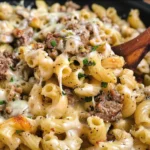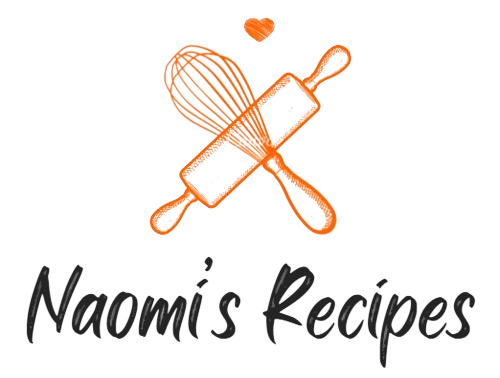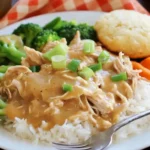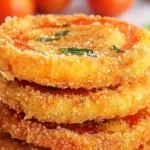Philly Cheesesteak Pasta is a culinary delight that marries the heartiness of the classic Philadelphia cheesesteak with the comfort of pasta. This dish is a testament to the creativity in modern cooking, where traditional meals are reimagined to cater to diverse tastes and preferences. At its core, Philly Cheesesteak Pasta combines thinly sliced steak, melted cheese, and pasta in a savory fusion that promises a taste of Philadelphia in every bite.
The concept of blending iconic sandwiches with pasta is not new, but this particular combination stands out for its bold flavors and ease of preparation. It’s a versatile dish that adapts well to various cooking styles, making it a favorite among home cooks and professional chefs alike. For those interested in the origins of the Philly cheesesteak, Wikipedia offers a comprehensive look at its history and cultural significance.
Philly Cheesesteak Pasta is not just a meal; it’s an experience. It offers a unique way to enjoy the rich, cheesy goodness of a Philly cheesesteak without the bun, making it a perfect option for pasta lovers. Discover more pasta dish variations on Pinterest, where creative cooks share their takes on this beloved recipe.
The Origins of Philly Cheesesteak :
The Philly cheesesteak is more than just a sandwich; it’s a symbol of Philadelphia’s rich culinary heritage. Its origins date back to the early 20th century, conceived by accident when a hot dog vendor decided to grill some beef and toss it on a roll. This simple yet revolutionary idea gave birth to a sandwich that would become synonymous with the city itself. For those curious about the evolution of this iconic dish, a deep dive into its history on Wikipedia reveals its fascinating journey from local novelty to national treasure.
The transition of the Philly cheesesteak from a sandwich to a pasta dish is a brilliant example of culinary innovation. Chefs and home cooks have experimented with the core ingredients—sliced steak, onions, and cheese—to create a pasta dish that encapsulates the essence of the original sandwich. This reinvention not only pays homage to the classic but also introduces it to a wider audience who might prefer pasta over bread.
Philly Cheesesteak Pasta epitomizes comfort food, combining the creamy, cheesy texture of pasta with the rich, umami flavors of steak and onions. Its popularity has soared, with numerous recipes available online for those eager to try making it at home. For inspiration, Pinterest offers a plethora of variations, each adding a unique twist to the traditional recipe. Whether it’s the choice of cheese, type of pasta, or additional vegetables, these recipes encourage personalization, making Philly Cheesesteak Pasta a dish that celebrates creativity in the kitchen.
The Recipe Breakdown :
Ingredients Overview :
Creating the perfect Philly Cheesesteak Pasta starts with selecting the right ingredients. The essence of this dish lies in its simplicity and the quality of its components. Here’s a breakdown of the key ingredients that bring this comfort dish to life:
- Pasta: Opt for sturdy varieties like penne, rotini, or cavatappi that can hold up against the rich sauce and meat. The choice of pasta significantly influences the dish’s texture and ability to blend flavors effectively.
- Beef: Thinly sliced ribeye steak is the traditional choice for authentic Philly cheesesteak flavor. However, for a more budget-friendly option, lean ground beef provides a similar richness and depth.
- Cheese: A blend of provolone and mozzarella cheese mirrors the creamy, melty consistency iconic to the dish. For a sharper taste, some recipes suggest incorporating sharp cheddar or experimenting with Cheez Whiz for an authentic Philly touch.
- Vegetables: Bell peppers and onions are sautéed to sweetness, adding a layer of complexity and crunch to the dish. While green bell peppers are most common, red or yellow peppers can also be used to add color and sweetness.
- Seasonings: Salt, pepper, garlic powder, and Worcestershire sauce elevate the meat’s flavor, bringing a savory depth to the pasta. These seasonings are adjustable according to taste, allowing for a personalized flavor profile.
Each ingredient in Philly Cheesesteak Pasta plays a crucial role, contributing to the dish’s overall harmony and appeal. For those looking to explore more about the impact of each component, a detailed exploration on Wikipedia can provide additional insights into pasta types and their culinary uses. Additionally, finding the perfect cheese blend is key to achieving the gooey, delicious texture that makes this dish so irresistible. For cheese inspiration, Pinterest offers a wide array of options suited for pasta dishes.
Step-by-Step Cooking Process :
Creating a Philly Cheesesteak Pasta masterpiece involves a series of steps that blend the distinct flavors of its components into a cohesive and delicious whole. Follow this detailed guide to ensure every bite is as satisfying as it is flavorful.
- Prepare the Pasta: Begin by cooking your chosen pasta according to the package instructions until al dente. Remember, the pasta will continue to cook slightly when mixed with the other ingredients, so it’s essential not to overcook it at this stage. Drain and set aside, reserving a cup of the pasta water for later to help create a silky sauce.
- Brown the Beef: While the pasta cooks, heat a large skillet over medium-high heat. Add the thinly sliced ribeye or ground beef, seasoning with salt and pepper. Cook until the beef is browned and cooked through, ensuring to break up the ground beef into small pieces for a consistent texture. Once cooked, remove the beef from the skillet and set aside.
- Sauté the Vegetables: In the same skillet, add a tablespoon of olive oil and the diced onions and bell peppers. Cook over medium heat until the vegetables are soft and beginning to caramelize. This step is crucial for developing the dish’s depth of flavor. For an extra kick, consider adding a pinch of red pepper flakes.
- Create the Sauce: Lower the heat and sprinkle flour over the cooked vegetables, stirring to coat them evenly. This will help thicken the sauce. Slowly pour in beef broth and the reserved pasta water, whisking continuously to prevent lumps. Add a splash of Worcestershire sauce and a teaspoon of garlic powder for that classic Philly Cheesesteak flavor. Allow the sauce to simmer gently until it thickens.
- Combine Ingredients: Return the cooked beef to the skillet, mixing it well with the sauce and vegetables. Then, fold in the cooked pasta until everything is evenly coated. If the mixture seems too thick, add a bit more pasta water to achieve the desired consistency.
- Add the Cheese: Lower the heat and gradually mix in shredded mozzarella and cubes of provolone cheese until melted and smoothly combined with the pasta. The cheeses should create a creamy, enveloping sauce that binds all the ingredients together. For a more indulgent dish, some cooks like to top the pasta with extra slices of provolone and place it under the broiler for a few minutes until bubbly and golden.
- Garnish and Serve: Once the cheese is thoroughly melted and the pasta is coated in the creamy sauce, it’s time to serve. Garnish with chopped parsley or a sprinkle of grated Parmesan for a touch of freshness and additional flavor. Serve hot, allowing each bite to transport you to the streets of Philadelphia.
Cooking Philly Cheesesteak Pasta is an exercise in balancing flavors and textures. The creamy, cheesy sauce, tender beef, and perfectly cooked pasta come together to create a dish that’s comforting, satisfying, and bursting with flavor. Whether you’re a seasoned chef or a novice in the kitchen, this step-by-step guide will help you master the art of making this beloved dish.
For those eager to explore variations of the classic Philly Cheesesteak or find additional pasta recipes, a treasure trove of culinary inspiration awaits on Pinterest. Here, you can discover new twists on the recipe or gather ideas for your next pasta creation, ensuring your home cooking never lacks variety or excitement.
Variations and Customizations :
Variations of the Recipe :
Philly Cheesesteak Pasta is a dish that lends itself to a myriad of variations, allowing cooks to adjust the recipe based on personal taste, dietary restrictions, or whatever ingredients they have on hand. Here are some popular twists on the classic recipe that can inspire your next culinary creation:
- Meat Alternatives: For those looking for a lighter version or adhering to dietary preferences, replacing the traditional beef with ground turkey or chicken is an excellent option. These alternatives still absorb the dish’s flavors well while offering a leaner protein choice.
- Cheese Varieties: While provolone and mozzarella are the go-to choices for their melting qualities and mild flavor, don’t hesitate to experiment with other cheeses. Sharp cheddar can add a depth of flavor, while Cheez Whiz offers a nod to the classic Philly cheesesteak sandwich.
- Pasta Types: While short, sturdy pasta like penne or cavatappi is typically recommended, trying different pasta shapes can add a fun twist to the dish. Spirals or shells can catch more of the sauce, enhancing the flavor with every bite.
- Vegetable Add-ins: Bell peppers and onions are staples in the Philly Cheesesteak Pasta, but adding mushrooms, spinach, or even diced tomatoes can introduce new textures and flavors, making the dish more versatile and nutritious.
- Spicy Kick: For those who enjoy a bit of heat, incorporating red pepper flakes, diced jalapeños, or a splash of hot sauce can elevate the dish, adding an exciting spicy dimension that contrasts beautifully with the creamy cheese sauce.
These variations not only demonstrate the flexibility of Philly Cheesesteak Pasta but also encourage home cooks to get creative in the kitchen, experimenting with ingredients to find their perfect version of this comforting dish. Exploring different variations on Pinterest can provide further inspiration and showcase the endless possibilities for customization.
Customizing Your Philly Cheesesteak Pasta :
Customization is key to making Philly Cheesesteak Pasta fit into any meal plan or dietary preference. Here are several ways to tailor the dish to meet various needs:
- Gluten-Free Options: Swap traditional pasta for a gluten-free variety to make the dish accessible to those with gluten sensitivities. Many gluten-free pastas offer comparable texture and flavor, ensuring no one misses out on this delicious meal.
- Vegetarian and Vegan Variations: Replace the beef with sautéed portobello mushrooms or seitan for a vegetarian version. For a vegan adaptation, use plant-based ground meat substitutes and dairy-free cheese options. These swaps allow everyone to enjoy the essence of the dish, regardless of dietary restrictions.
- Low-Carb and Keto-Friendly: For those following a low-carb or keto diet, replace the pasta with spiralized vegetables like zucchini or spaghetti squash. This substitution significantly lowers the carb content while still delivering the flavors of the classic Philly cheesesteak.
- Adjusting for Spice Levels: The spice level in Philly Cheesesteak Pasta can easily be adjusted to suit individual tastes. For those who prefer a milder dish, simply reduce or omit the red pepper flakes. Conversely, adding more flakes or a dash of hot sauce can satisfy those who crave extra heat.
By embracing customization, Philly Cheesesteak Pasta becomes a versatile dish that can appeal to a wide audience. Whether making adjustments for dietary reasons or personal preference, the essence of the dish remains intact: a comforting, cheesy pasta that’s bursting with flavor. For additional customization ideas, Pinterest serves as an excellent resource, offering countless variations and suggestions for making this dish uniquely yours.
Complementing Your Meal :
Serving Suggestions :
To round out your Philly Cheesesteak Pasta meal, consider pairing it with sides that complement its rich and savory flavors. A well-chosen side dish can balance the meal, adding freshness, texture, and color. Here are some suggestions:
- Garden Salad: A simple garden salad dressed with a light vinaigrette offers a crisp, refreshing contrast to the creamy pasta. Include a variety of greens, cherry tomatoes, cucumbers, and red onions for a burst of freshness.
- Garlic Bread: Crispy garlic bread is perfect for sopping up any remaining cheese sauce. Its buttery garlic flavor enhances the pasta dish, making it even more irresistible.
- Roasted Vegetables: Roasted asparagus, broccoli, or Brussels sprouts seasoned with olive oil, salt, and pepper provide a healthy and flavorful addition to the meal. The slight char from roasting complements the pasta’s savory notes.
- Coleslaw: A tangy coleslaw can add a crunchy and slightly sweet element, refreshing the palate between bites of the rich pasta.
These serving suggestions not only add variety to your meal but also ensure a balanced and satisfying dining experience. Incorporating one or more of these sides will make your Philly Cheesesteak Pasta dinner even more enjoyable, creating a well-rounded meal that’s sure to impress.
Storing and Reheating Tips :
Philly Cheesesteak Pasta makes excellent leftovers, provided it’s stored and reheated properly. Here’s how to keep it tasting fresh:
- Storing: Cool the pasta completely before transferring it to an airtight container. Properly stored, it can last in the refrigerator for up to 3 days. Ensure the container is sealed tightly to prevent the pasta from drying out or absorbing other flavors from the fridge.
- Reheating: To reheat, place the pasta in a microwave-safe dish, adding a tablespoon or two of water or beef broth to help remoisturize the sauce. Cover with a microwave-safe lid or vented plastic wrap and heat on medium power, stirring occasionally, until heated through. For a crispier top, the pasta can also be reheated in an oven. Preheat the oven to 350°F (175°C), transfer the pasta to an oven-safe dish, and cover with aluminum foil. Bake for about 15-20 minutes, or until thoroughly warmed. If desired, remove the foil in the last few minutes and broil to re-crisp the cheese topping.
Following these tips ensures your Philly Cheesesteak Pasta remains delicious, maintaining its creamy texture and rich flavor even on the second or third day. Enjoying this dish as leftovers is a testament to its versatility and enduring appeal.
FAQs :
Philly Cheesesteak Pasta is a beloved dish that often generates curiosity and questions from both experienced cooks and novices alike. Here are some frequently asked questions to help demystify this comforting meal:
- Can I use a different type of meat? Yes, while thinly sliced ribeye steak is traditional for a Philly cheesesteak, ground beef, ground turkey, or even sliced chicken breast can be used for the pasta version. Each offers a unique flavor and texture.
- What can I do if the sauce is too thick? If your sauce thickens too much, gradually add more beef broth or reserved pasta water until you reach the desired consistency. This will help loosen the sauce without diluting the flavor.
- Can I make this dish ahead of time? Absolutely! You can prepare Philly Cheesesteak Pasta ahead of time and store it in the refrigerator. Reheat in the oven or microwave, adding a little broth if needed to refresh the sauce.
- Is there a dairy-free version? For a dairy-free alternative, substitute the cheese with vegan cheese products that melt well. Also, use olive oil in place of butter and select a dairy-free pasta.
- How can I make this dish spicy? To add heat, include red pepper flakes while cooking the beef and vegetables, or stir in a bit of your favorite hot sauce to the cheese sauce for an extra kick.

Philly Cheesesteak Pasta
- Author: Easy Recipes
Ingredients
2 tablespoons olive oil
1 pound ground beef
½ yellow or sweet onion, diced
Salt and pepper, to taste
2 teaspoons Worcestershire sauce
1 green bell pepper, stem and seeds removed, diced
8 ounces elbow macaroni, uncooked
1 cup water
14.5 ounce can of beef broth, or 2 cups beef broth
½ cup 2% milk
2 ounces cream cheese, cut into small cubes
½ cup mozzarella cheese, shredded
6 to 8 ounces provolone cheese, sliced and torn into pieces
Chopped fresh parsley for garnish
Instructions
- Heat olive oil in a 12-inch skillet over medium heat. Brown ground beef and onion in skillet until meat is no longer pink and onions are soft and translucent. Season with salt and pepper to taste.
- Add Worcestershire, green bell pepper, macaroni noodles, water, and beef broth. Bring to a boil over high heat. Once water comes to a boil reduce heat to low, cover, and simmer for 15 minutes. Check to ensure the pasta has fully cooked and most of the liquid has been absorbed/evaporated.
- Keeping the skillet over low heat add the ½ cup of milk and cubed cream cheese. Stir until the cream cheese has been incorporated.
- Remove from heat. Sprinkle the mozzarella and half of the provolone cheese into the pan and stir to distribute.
- Top with the remaining provolone cheese. Put the lid back on the skillet for a couple of minutes to melt the cheese.
- Garnish with chopped parsley.




